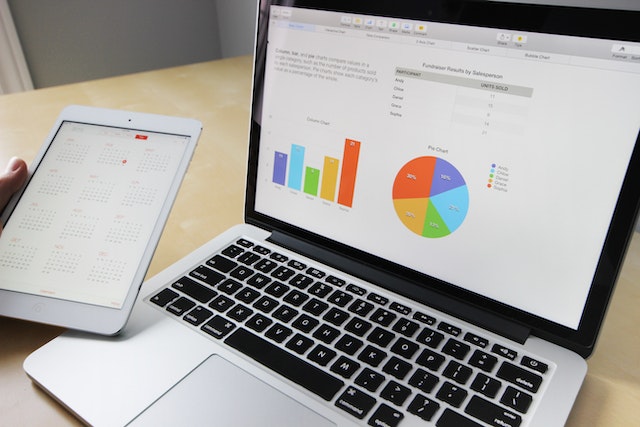Marketers have a great opportunity to reach an audience that is already in the right frame of mind to do business by using LinkedIn Ads, which are a major player in business-to-business advertising.
However, LinkedIn Ads aren’t limited to business-to-business enterprises; many different types of organizations, including B2C businesses, nonprofits, and educational institutions, have found great success using the platform to advertise their causes and recruit qualified candidates for open positions.
In this article, we’ll explore LinkedIn advertising and learn how to use the platform to grow our company.
The Various LinkedIn Ad Formats
There are typically four types of LinkedIn adverts. Take a look at each one of them with some illustrations.
Promoted Posts
In-feed advertisements, also known as sponsored content, resemble organic posts save for the “sponsored” label. They are highly visible and conducive to interaction, offering you the opportunity to produce material that readers will be eager to click on.
Choose from the following advertising mediums:
Banner advertising consisting on a single image
Advertising carousels
Online commercials that play in videos
Commercials for Events
Lead Generation advertisements and the lead gen ad style are similar to Sponsored Content ads, with the exception that when generating a Lead Generation ad, you’ll select the “Lead Generation” option rather than the “Sponsored content” option.
Advertising Through Sponsored Messages
Incredibly useful advertisements, Sponsored Messaging appears as messages in users’ inboxes. These advertisements contain a sponsored label and a call to action button, but recipients must click inside the message to mark it as read, and it remains in the inbox after being read.
These ads typically have a high open rate and can be very effective because there is little else for users to do but check out your product.
Two different types of advertisements are available to you:
Spots that strike up a chat
Banner Ads
Promoting Products Through Text Messages
Banner adverts in the form of text appear on the right side of the screen and stay there while the user scrolls down the page. These remind me of the advertisements that appear on the sides of web pages on Facebook.
You can expect to see the brand logo as the only visual element in a standard text ad alongside some brief writing and a call to action. While their exposure may be less than that of LinkedIn’s other advertising alternatives, they are easy to make and can generate results at a reasonable cost.
Personalized commercials
As both types of adverts appear in Linkedin’s right-hand siderail, people may mistakenly assume that they are identical.
As you can see in the illustration below, dynamic advertising are often presented independently. (The text advertisements appear in pairs.)
The best feature is the usage of the user’s name and image in dynamic adverts. This is a common tactic for attracting attention to a business, a product, or an individual.
Ads that employ the spotlight or the follower format can be found in the Dynamic Ads section.
aims of LinkedIn advertisements
It is not enough to simply know what kinds of ads you want to run; you must also select goals for each particular marketing campaign. The success of a campaign is heavily dependent on the objectives you set for it.
LinkedIn Ads allows you to optimize for three distinct categories of goals based on the particular actions your target audience takes.
Publicity on Linkedin
Brand and name recognition are the primary goals of awareness commercials. They value views more than other metrics like clicks or pageviews. Prices start at $9.99 per 1,000 views (CPM).
Only brand recognition serves as a singular goal.
LinkedIn’s Prospecting Ads
In the digital sales funnel, the consideration stage is best served by ads that encourage visitors to engage with your company even more.
A few of the specific goals that fall under this broader heading are as follows:
Pay-per-click advertising on websites.
Participation, wherein one may acquire services on a pay-per-click or -action basis (e.g. page follow).
When your online video ad is viewed, you’ll be charged.
Conversion-focused ads on LinkedIn
Direct and immediate calls to action are emphasized in conversion commercials. Clicks and conversions can usually be purchased separately.
You can choose from the following list of objectives while making a conversion:
The process of generating leads, in which a user’s personal information is pre-filled into a form presented to them on the platform, is called lead generation.
Acquisition of new customers, information, etc., through a website.
In the case of job applications, you want to encourage as many people as possible to submit an application for the position you are advertising.
Ad layouts on LinkedIn
Need help deciding which LinkedIn ad format to use? Take a look at the 10 choices and LinkedIn’s suggested specifications for each.
Keep in mind that PNG and JPG are the preferred image file types for all ad formats.
Banner advertising consisting on a single image
There is a specific sort of sponsored content ad called “single image advertisements” that focuses solely on a single image.
Technical requirements for a single-image ad on LinkedIn:
Size limit for uploaded files is 5MB.
Horizontal desktop and mobile ad images should have a ratio of 1.91:1.
Square desktop and mobile advertising have a 1: 1 aspect ratio
Ads designed specifically for vertical display on mobile devices have a 1:1.9:1 picture ratio.
The following aims benefit greatly from this style of advertisement:
Popularity of a Brand
User Interaction with Websites
Engagement
Conversions on Websites
Generating Leads
Online commercials that play in videos
Advertising that take the form of videos, as opposed to still images, are known as video ads.
Guidelines for LinkedIn videos:
As an example, MP4 is the preferred format.
Video audio might be in AAC or MPEG4 format.
30 frames per second is the sweet spot.
We advise making your own thumbnails.
Typically, landscape videos have a 16:9 aspect ratio.
Square video should have a ratio of 1 to 1.
In horizontal perspective, the 9:16 ratio is the norm.
The following aims benefit greatly from this style of advertisement:
Perspectives on video
User Interaction with Websites
Advertising carousels
In order to attract more attention, advertisers might utilize carousel advertising to display numerous slides at once. There may be anywhere from two to ten cards in a set.
Each picture in a carousel ad must have a 1:1 aspect ratio and no more than 10MB in size because it will be cropped to a square. Only 45 characters can be used for the headline on each card.
The following aims benefit greatly from this style of advertisement:
Popularity of a Brand
User Interaction with Websites
Engagement
Conversions on Websites
Generating Leads
Commercials for Events
The goal of running event ads on LinkedIn is to increase attendance at your event.
Specifications for LinkedIn Events Ads
Photographs will be downloaded from the Event page and cropped to a 4:3 aspect ratio.
maximum of 255 characters for the event’s title and 600 for its description
The following aims benefit greatly from this style of advertisement:
Popularity of a Brand
User Interaction with Websites
Promotional Ads That Get People To Take Action
Spots that strike up a chat
Conversation advertisements are a subset of Messaging ads that allow you to steer the conversation in a certain direction or push the user to take some sort of action by means of bespoke Calls to Action.
Specifications for LinkedIn Chat Ads:
Banner picture dimensions are 300×250 pixels.
In order to use a banner, the file size must be less than 2MB.
There is a 500-character limit on the message body.
There’s a 2500 character cap on the personalized footer.
The following aims benefit greatly from this style of advertisement:
Popularity of a Brand
User Interaction with Websites
Promotional Ads That Get People To Take Action
Conversions on Websites
Generating Leads
Banner Ads
Advertisements in the Message format are sent as plain text emails to recipients, who can then respond to the message or click on a button to take some sort of action.
Guidelines for LinkedIn Message Ads:
Banner should be 300×250 pixels in size.
The maximum file size for a banner image is 2MB.
There is a 60-character limit on the subject line of an email.
Up to 1500 characters for your message
Anywhere from 250 to 2500 characters can be used for the personalized footer.
You’re allowed 20 characters for the CTA.
The following aims benefit greatly from this style of advertisement:
User Interaction with Websites
Conversions on Websites
Generating Leads
Inquiry-initiating advertisements
LinkedIn Lead Gen advertisements mimic sponsored content postings, but they link to an on-platform (and mobile-friendly) lead form.
Specifications for LinkedIn lead gen ads:
Ads with several images must adhere to the same picture specifications.
There is a 256-character limit on the form’s name.
There’s a 60-character cap on the headline, and another 160 for the offer itself if you want it.
There is a 2,000-character limit on the privacy statement.
There is a 300-character limit on the confirmation message.
There’s room for up to 12 fields on the form, but we recommend no more than 3.
The following aims benefit greatly from this style of advertisement:
Generating Leads
Banner Ads That You Can Text
This space can be used for your company’s logo in a text ad. Text advertisements are succinct and appear in the sidebar on the right.
For those interested in advertising on LinkedIn via text:
In terms of pixels, the logo needs to be exactly 100 on 100.
It’s recommended that the logo’s file size be under 2MB.
The headline can only be 25 characters long, and the description can be no more than 75.
The following purposes benefit greatly from the use of these pictures:
Popularity of a Brand
User Interaction with Websites
Conversions on Websites
Publicity stunts
Short, text-based adverts known as “Spotlights” populate LinkedIn’s right sidebar. They are an example of a dynamic ad.
Technical specifications for LinkedIn Spotlight ads:
We recommend a resolution of 100×100 pixels for your company’s logo.
The maximum size for a logo file is 2MB.
If you choose to utilize a background image, make sure it’s no larger than 300 by 250 pixels.
There is a total of 150 characters available; 50 for the headline, 70 for the body, and 18 for the call to action.
The following purposes benefit greatly from the use of these pictures:
Popularity of a Brand
User Interaction with Websites
Engagement
Ads that are shown to one’s followers
The sole purpose of this ad format is to gain likes for your Page.
Ad requirements for LinkedIn followers:
100×100 pixel logo required.
Maximum 2MB file size
There is a total of 150 characters at your disposal; 50 for the headline, 70 for the body, and 25 for the call to action.
The following purposes benefit greatly from the use of these pictures:
Popularity of a Brand
User Interaction with Websites
Engagement
To advertise on LinkedIn, how much can I expect to pay?
The price of ads on LinkedIn varies widely, as it does on other PPC network. Consider factors including the saturation of your target population, the number of rival brands, and the state of the market when deciding what kind of advertisement to run.
You can limit your spending on a given action by setting a maximum bid. You can specify a maximum cost-per-click (CPC) that you are willing to pay. Although this puts you in charge of expenses to some extent, setting an unrealistically low price could mean missing out on placement opportunities.
My personal experience has shown that the average cost each click is between $5 and $7, that the cost per thousand impressions is less than $10, and that the cost every sponsored text message is around $1. However, once again, there is a wide margin for variation.
Methods for Developing LinkedIn Ads That Generate Leads
Having found great success with Facebook’s lead advertisements, I was thrilled to learn that LinkedIn has released its own version of lead ads, complete with in-app lead forms. When your target audience fills out a LinkedIn lead gen form, the information they provide will be populated with data the platform already has on file, making the process seamless and easy.
LinkedIn’s Campaign Manager is where you’ll set up your lead gen advertising. Then, at the top right, select Create Campaign.
Select Leads from the list of goals on the following screen.
If you haven’t visited LinkedIn Ads lately, you might notice something different: whereas before you had to choose an ad format first, the process of making ads now resembles Facebook’s.
Next, you’ll be prompted to enter your targeted criteria (which we’ll explore in greater depth in a little).
The format of the advertisements for the campaigns can then be selected.
The same can be said of this, which is brand new as well. Advertisements can be either single images, carousels of images, videos, or text.
The following phase entails developing the actual advertising initiatives.
Start by giving the ad a name, typing some copy, and selecting an image as you typically would.
Lead form creation is an option down here.
This will require two separate actions. Initial steps include giving the form a name, description, call to action, and privacy policy.
The next step is to decide what data will be requested from the user.
While it may be useful to ask a qualifying question (such as what services the client might be interested in) to assist guide your follow-up, keeping lead forms brief will encourage more individuals to see them through to the conclusion.
Next, proceed with the advertising campaign as you typically would.
Methods for Developing Targeted Groups
Using LinkedIn’s Matched Audiences, advertisers may mix their own company data (such as an existing contact list) with LinkedIn user data to reach a larger audience. Retargeting, as well as lookalike targeting, account targeting, and contact targeting, are all part of this strategy.
Whenever you make a LinkedIn campaign, you may use the Matched Audiences feature of your ad builder. We’ve included this tutorial because it’s a potentially crucial aspect of LinkedIn advertising efforts.
This choice can be found in the Who is your target audience? section.
section. To use it, just click it and pick “Add matched audience.”
You can then either upload lists of customer names and emails or use website behavior to create matching audiences.
The former facilitates the creation of automatic, triggered campaigns in response to specific site behavior, while the latter facilitates the targeting of people who have previously been segmented by you, such as repeat buyers or those who have subscribed to a particular newsletter.
LinkedIn’s conversion tracking pixel, which is quite similar to Facebook’s, is what you’ll need to make audience websites. Just wait a minute, and we’ll demonstrate how to upload it.
Carefully select your target criteria for this option so that users interested in specific products or services see the most relevant copy.
For instance, if someone was interested in my PPC services but not my content marketing services, I wouldn’t want to force-feed them an ad for the latter. Getting this correctly will involve more personalized campaign creation, but the improved results will be worth the extra effort.
Choose from a variety of customer list templates that LinkedIn provides if you’d rather target certain accounts or email addresses. You can get the blank forms here, fill them out as necessary, and then upload them back to the system.
Once again, segmentation will be your best friend in this situation, as it will allow you to divide your lists of leads or customers according to the information you already have, allowing you to tailor your offers to each subset.
Marketing on LinkedIn: What You Should Know
Is success with LinkedIn Ads your goal? These methods will assist you reach your goal.
Make use of tactics that center on the content being shared
If you compare LinkedIn to other social media networks, especially those with character limits like Twitter and Instagram, you’ll notice that LinkedIn users tend to write more longer updates. Not only can you fit more words in, but LinkedIn members are also more likely to read and interact with longer pieces if they find the information to be interesting and useful.
LinkedIn ads that use content marketing to establish trust with potential customers before pushing hard sales messages perform particularly well on the platform.
With the help of well-written content, customers can become familiar with your company and its offerings, developing a favorable impression of your brand that can be used in the future.
Promote the brand’s principles and identity in the commercial.
In today’s market, consumers, businesses, and potential employees alike are searching for companies with moral compass. That is, ideals that contribute to ethics, morality, and global peace. Both as customers and workers, we value companies that act ethically and give back to the communities in which they operate.
Consequently, it’s a great idea to use advertising campaigns to raise brand recognition by emphasizing the company’s values and corporate social responsibility (CSR) efforts.
This holds true whether your goal is to acquire new staff or customers.
Look at this advertisement for Fifth Third Bank for an example of how this is done.
They don’t promote their offerings or provide any flashy calls to action. They don’t actually do anything; rather, they make an announcement that they’re teaming up with a few other groups to establish a fund to aid small, minority, and female-owned enterprises.
They’re spreading goodwill by helping others, and that’s helping them in the marketplace.
Promote your special selling point with banner ads.
While this is true for all advertising initiatives, it seems that LinkedIn has been overlooked by marketers.
It’s still crucial to make it clear to readers why your ad is relevant to them, even if it’s embedded in content.
If it’s your own product you’re trying to sell, by all means, make the case for it. If it’s content, that’s fantastic too! Lay out the benefits that will accrue to the users.
In the side column advertising, where the wording is so much more prominent, this is absolutely crucial.
Your copywriting abilities will be put to the ultimate test here.
You should emphasize the uniqueness of your value proposition as a means of differentiating yourself from the competition.
All of the commercials in this screenshot accomplish this successfully.
Attempt to reach the decision-makers
Pam wants a new desk chair in one episode of The Office. However, she is not the decision-maker at the Dunder Mifflin office in Scranton, so it doesn’t matter how many commercials she sees for the most comfortable office chairs in the world. Because Michael is, it is more appropriate for him to be the target of these commercials.
This is a typical error made by LinkedIn advertisers. Many companies make the mistake of trying to appeal to everyone who might potentially buy their wares. Marketers frequently miss the mark when they target consumers who might have some interest in a product but aren’t in a position to make a purchase. While it’s true that some of these people can influence decisions within their organizations, the ad will be much more successful if it reaches the proper individual from the start.
LinkedIn’s job title targeting options make it easier to zero in on the proper people for your message.
You shouldn’t approach the company’s social media intern if you’re trying to offer social media software to the company; instead, go straight to the chief marketing officer or social media manager. Aim for the highest levels of management if you want to see the most progress.
I’d want to add that it’s possible to identify more accessible decision-makers among your target audience of solopreneurs, mini-agencies, and other small enterprises. Every person involved has a greater say in the outcome and justification of the situation.
Think carefully about who you choose to include or exclude from your circle of supporters.
You can choose whether or not to include people who are already following your company in your target audience when you set up your targeting criteria. There are merits to both approaches.
There will already be a preexisting relationship between your company and its current followers, which you can capitalize on.
Users will interact with the ad more frequently, and some of them may even provide positive social proof. I have completed this course before and can attest to its high quality. A simple “helpful” comment like “” can go a long way toward converting other first-time users or inspiring them to learn more. Your relationship with them will also help you when you launch new products or launch a promotion that you hope will bring in more sales.
If you want to improve the precision of your targeting, however, you might want to stop including your current company’s followers.
If you want to run a video campaign designed to build brand awareness, you really don’t need to be showing that ad to existing users. You could end up paying for clicks or actions that won’t benefit you much, but will burn some of your ad spend.
Consider what your goals are when you make this decision. Content-based ads can do well with your existing audience, but if you’re on a tight budget and looking for specific results from new potential customers or leads, stick to excluding followers.
Tell a story
As a copywriter, this is one of my all-time favorite ad copywriting strategies. Storytelling can help you create a specific, strategic impact on how customers view and remember your business or product.
A great example of how to use storytelling to really make an impact is the ad below from Georgetown University.
They pair a video ad with enticing copy and a question, and then immediately answer the question with an exclusive inside look into what your experience could be as a student.
Having a current student talk about what they love about the university’s program, how it’s affecting their life, and what they’re learning makes the value proposition come to life. You can envision yourself in that classroom, talking to those professors, learning those lessons. The mental image created by the ad turns into a memory that conveys the hope and excitement that comes with a potentially big future.
What do you think? Have you ever used LinkedIn’s ad system? If so, which ad formats worked best for you? What results did you get? Share your thoughts and questions in the comments below!




